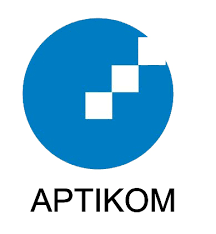Application for Recording Marriage Events at KUA: Design and Implementation Using Visual Studio 2012 and MySQL
DOI:
https://doi.org/10.18196/eist.v5i2.24846Keywords:
Visual Studio 2012, Mysql, Marriage Event Recording Application, Religious Affairs OfficeAbstract
In the management of data recording marriage events at the KUA (the Office of Religious Affairs) is still manual and has not utilized information technology to the fullest. The process of inputting, managing and storing data on recording marriage events only utilizes Microsoft Office applications and there is even some data that is written manually so that the process of presenting reports for recording marriage events is still relatively slow and inefficient, there are often errors and loss of data which results in the KUA having to search for data again. To overcome this problem, an application design is carried out that can speed up the process of recording marriage events at the KUA. Design and Implementation was using Visual Studio 2012 and MySQL as a database processing place. The application designed to support the process of recording marriage events more effectively and efficiently.
References
M. A. N. K. Mazin, “Analisis Implementasi Pencatatan Perkawinan di KUA Bojongsoang menurut Pasal 40 PMA Nomor 20 Tahun 2019 dan Hukum Islam,” Bdg. Conf. Ser. Islam. Fam. Law, vol. 2, no. 2, 2022, doi: 10.29313/bcsifl.v2i2.4421.
M. A. N. K. Mazin, “Analisis Implementasi Pencatatan Perkawinan menurut Peraturan Menteri Agama dan Hukum Islam,” J. Ris. Huk. Kel. Islam, hlm. 105–110, 2022, doi: 10.29313/jrhki.vi.1379.
S. Syafrida, A. E. Tarigan, R. Suryani, dan Warsito, “Solution for Recording Interfaith Marriages Following Supreme Court Circular (SEMA) Number 2 of 2023 in Indonesia,” Sinergi Int. J. Law, vol. 2, no. 2, hlm. 120–133, 2024, doi: 10.61194/law.v2i2.158.
A. Fahruzi, A. Rohmanu, dan A. Junaidi, “Efektivitas Sistem Informasi Manajemen Nikah Berbasis Web dalam Sistem Pelayanan Kartu Nikah Digital,” 2023, doi: 10.21154/jelhum.v2i2.2192.
N. M. Nopri, M. Nursafitra, dan P. P. Septianis, “Efektivitas Program E-Kartu Nikah Di Kantor Urusan Agama (KUA) Kecamatan Sukarami Kota Palembang,” J. Publisitas, vol. 11, no. 1, hlm. 61–73, 2024, doi: 10.37858/publisitas.v11i1.491.
S. Hasanah, “Evaluasi Pelayanan Publik Di Kantor Urusan Agama (KUA) Melalui Sistem Informasi Manajemen Nikah,” 2024, doi: 10.24929/semnasfisip.v1i1.3190.
L. Hakim, “Implementasi Sistem Informasi Pendaftaran Calon Pengantin Berbasis Website,” J. Inf. Syst. Res. JOSH, vol. 4, no. 3, hlm. 998–1004, 2023, doi: 10.47065/josh.v4i3.3367.
M. N. L. Azis, “Komputerisasi Pendataan Pernikahan Dan Perceraian Pada Kantor Urusan Agama Kecamatan Kebonagung,” vol. 5, no. 1, 2012, doi: 10.3112/SPEED.V5I1.981.
S. Farida, “PENGEMBANGAN APLIKASI PENCATATAN NIKAH DI KANTOR URUSAN AGAMA KECAMATAN CIKAJANG GARUT,” J. Algoritma, vol. 12, no. 2, hlm. 386–392, 2015.
“Aplikasi pencarian judul tugas akhir mahasiswa berbasis visual studio 2012 dan mysql,” Rang Tek. J., vol. 6, no. 2, hlm. 277–284, 2023, doi: 10.31869/rtj.v6i2.4254.
R. Rizadian Mayangsari, “Ekeftivitas Penerapan Sistem Informasi Manajemen Nikah (SIMKAH) Di KUA Kecamatan Sawahan Kota Surabaya,” vol. 1204067424, no. June, hlm. 9, 2016.
O. Feriyanto, R. S. Amanda, C. Rahayu, L. Lusiana, dan O. Kusmayanti, “Optimasi Proses Bisnis Akuntansi Melalui Tahapan System Development Lifecycle Yang Efisien,” Ekon. Keuang. Syariah Dan Akunt. Pajak, vol. 1, no. 3, hlm. 262–271, 2024.
N. B. Ruparelia, “Software development lifecycle models,” ACM SIGSOFT Softw. Eng. Notes, vol. 35, no. 3, hlm. 8–13, 2010.
S. Audita, S. T. Siska, dan A. Budiman, “Perancangan Sistem Jadwal Dan Absensi Mengajar Guru Menggunakan Visual Studio 2012 Dan Mysql,” J. Pustaka AI Pus. Akses Kaji. Teknol. Artif. Intell., vol. 2, no. 1, hlm. 21–30, 2022.
M. Muliadi, M. Andriani, dan H. Irawan, “Perancangan Sistem Informasi Pemesanan Kamar Hotel Berbasis Website (Web) Menggunakan Data Flow Diagram (Dfd),” JISI J. Integrasi Sist. Ind., vol. 7, no. 2, hlm. 111–122, 2020.



